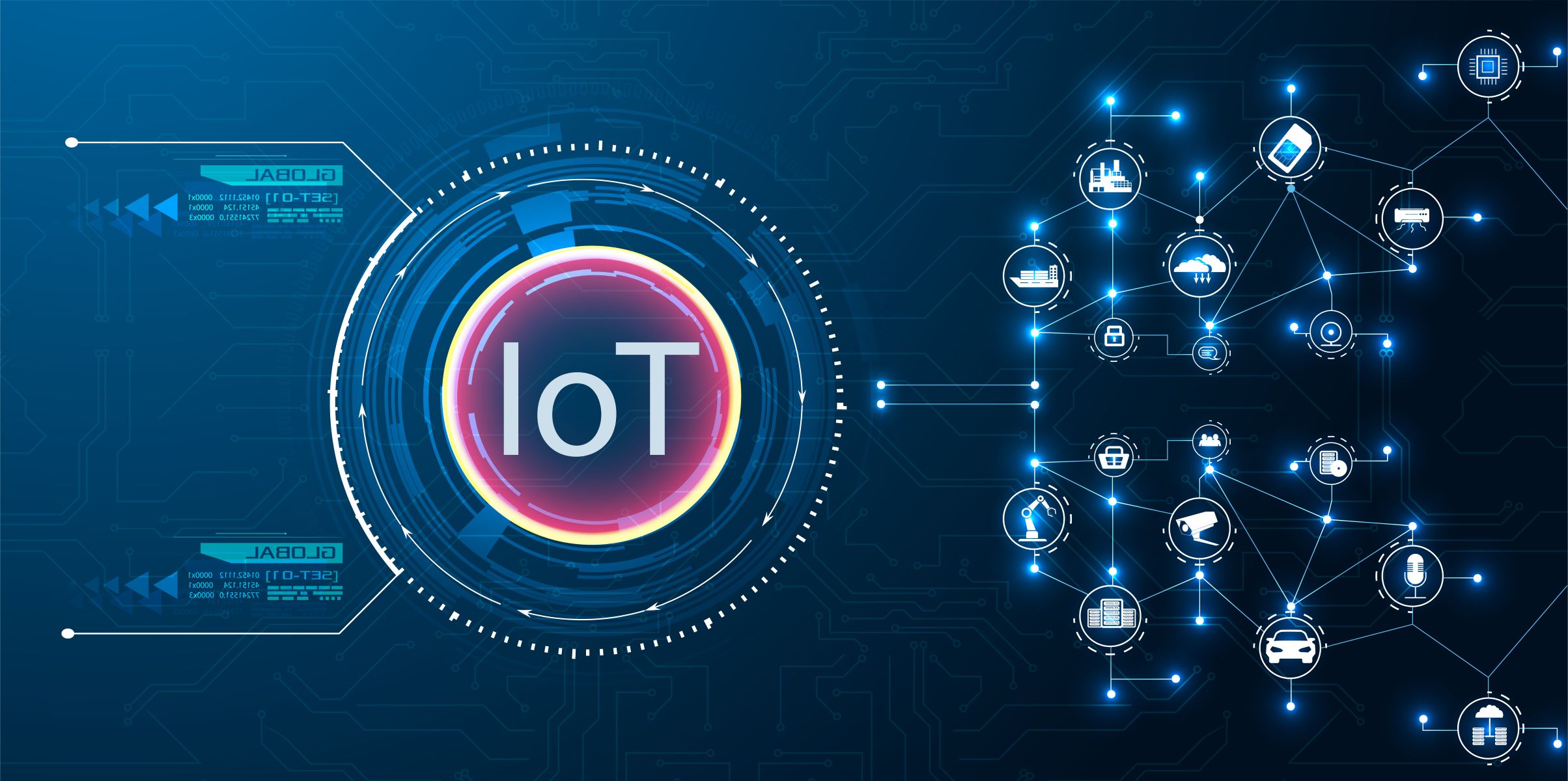Lack of standardized communication protocols
The lack of standardized communication protocols is a major barrier to the widespread adoption of the Internet of Things (IoT). Without a universal framework for devices to communicate with each other, it becomes challenging to create interoperable and seamless connections between different IoT devices. This lack of standardization not only hinders the development of IoT applications but also creates compatibility issues that limit the ability of devices to work together effectively.
One of the main challenges in establishing standardized communication protocols is the sheer diversity of IoT devices. Each device operates on its unique set of specifications and protocols, making it difficult to create a universal standard that works across all devices. This lack of standardization leads to fragmentation within the IoT ecosystem, where devices from different manufacturers cannot easily communicate with each other.
Furthermore, the absence of standardized protocols makes it challenging for developers to create applications and services that can seamlessly integrate with various IoT devices. This lack of interoperability leads to a fragmented market where consumers are limited to using devices and services from a particular manufacturer or ecosystem.
The absence of standardized communication protocols also hampers the scalability of IoT implementations. Without a common framework, the task of integrating large-scale IoT deployments becomes more complex and time-consuming. This lack of scalability inhibits the widespread adoption of IoT technologies in industries such as healthcare, manufacturing, and logistics, where seamless connectivity is crucial for efficient operations.
Efforts are being made by industry organizations and standardization bodies to address this challenge. Initiatives such as the Thread Group, Zigbee Alliance, and the Open Connectivity Foundation aim to establish standardized communication protocols to enable better interoperability and collaboration between IoT devices. However, progress in this area has been slow, and widespread adoption of these standards is yet to be achieved.
Privacy and security concerns
The Internet of Things (IoT) has ushered in a new era of connectivity and convenience. However, along with these benefits come significant privacy and security concerns. As more and more devices become interconnected, the potential for unauthorized access, data breaches, and privacy infringements grows exponentially.
One of the primary concerns surrounding IoT devices is the collection and storage of vast amounts of personal data. From smart home devices that track our daily routines to wearable devices that monitor our health, IoT devices gather a wealth of sensitive information. If not adequately protected, this data can be vulnerable to hacking and misuse.
The increasing number of interconnected devices also poses a challenge for ensuring the security of IoT networks. Each device becomes a potential entry point for cybercriminals to exploit weaknesses in the system and gain unauthorized access to valuable data. Weak security measures or lack of regular software updates further exacerbate the risk of data breaches.
Furthermore, privacy concerns arise from the constant monitoring and data collection enabled by IoT devices. The surveillance capabilities of interconnected devices raise questions about individual privacy rights and the potential for misuse of personal information. This is particularly concerning in sectors such as healthcare, where the IoT is used to track patients’ health data and gather sensitive medical information.
Addressing these privacy and security concerns is crucial for the successful adoption of IoT technologies. Manufacturers and developers must prioritize robust security measures, including encryption, authentication protocols, and regular software updates to mitigate vulnerabilities. Industry standards and regulations should also be established to ensure that privacy rights are protected and that users have control over the data collected by IoT devices.
Furthermore, educating consumers about privacy and security best practices is key. Encouraging users to create strong passwords, regularly update firmware, and be vigilant about granting permissions can help reduce the risk of unauthorized access and data breaches.
Ultimately, the future success of the IoT hinges on the industry’s ability to address these privacy and security concerns. By prioritizing privacy, implementing robust security measures, and empowering users with control over their data, we can create a more secure and trustworthy IoT ecosystem.
High costs and infrastructure requirements
One of the significant challenges hindering the widespread adoption of the Internet of Things (IoT) is the high costs associated with implementing IoT technologies and the infrastructure requirements needed to support them. The deployment of IoT solutions often requires a substantial financial investment, making it a barrier for many organizations and individuals.
The costs associated with IoT implementation include not only the purchase of IoT devices but also the necessary infrastructure and connectivity. IoT devices require reliable and robust networks, such as Wi-Fi or cellular connectivity, to transmit and receive data effectively. Setting up and maintaining such networks can be expensive, especially in areas with limited internet access or where the existing infrastructure is outdated.
In addition to infrastructure costs, organizations also need to consider the expenses related to data storage and processing. IoT devices generate vast amounts of data, which need to be collected, stored, and analyzed to derive meaningful insights. This requires investment in cloud storage services, data analytics tools, and skilled professionals who can manage and interpret the data.
Moreover, as the number of interconnected devices grows, the need for scalability and expandability becomes crucial. Organizations may need to invest in upgrading their existing systems or deploying new infrastructure to accommodate the growing IoT ecosystem. These costs can be significant, particularly for smaller businesses or individuals who may have limited financial resources.
However, it is worth noting that while the initial costs may be high, the long-term benefits of IoT implementation can outweigh the expenses. IoT technologies can enhance operational efficiency, reduce costs, and drive innovation and growth. It is essential for businesses and individuals to consider the potential return on investment and long-term benefits when evaluating the cost of implementing IoT solutions.
Furthermore, technological advancements and economies of scale are gradually reducing the costs associated with IoT implementation. As the adoption of IoT technologies becomes more widespread, prices for devices and infrastructure are likely to decrease, making it more accessible to a broader range of users.
Overall, while the high costs and infrastructure requirements currently pose a challenge for the widespread adoption of IoT, with advancements in technology, decreasing costs, and a focus on long-term benefits, the barriers can be overcome, paving the way for a more connected and efficient future.
Compatibility issues and fragmented ecosystem
One of the significant challenges facing the widespread adoption of the Internet of Things (IoT) is the issue of compatibility and the presence of a fragmented ecosystem. The IoT market is flooded with a wide variety of devices and platforms, each with their own proprietary technologies and communication protocols. This lack of standardization and interoperability creates compatibility issues that hinder the seamless integration and collaboration between different IoT devices and systems.
The fragmented IoT ecosystem can be seen in various sectors, from smart homes to industrial automation. For example, different smart home devices, such as smart thermostats, light bulbs, and security cameras, often require separate applications or hubs to control them. This lack of compatibility can lead to a disjointed user experience, where each device operates within its siloed ecosystem, limiting the potential for cohesive integration and automation.
Moreover, different IoT platforms and frameworks often have their own proprietary technologies, making it difficult for developers to create applications and services that can work seamlessly across multiple devices and systems. This fragmentation increases the time and effort required to develop IoT solutions, as developers need to customize their applications to work with specific devices or platforms.
Compatibility issues also extend to the integration of IoT devices with existing IT infrastructure. Many organizations struggle to integrate IoT devices with their legacy systems, such as enterprise resource planning (ERP) or customer relationship management (CRM) systems. This lack of compatibility creates additional complexity and costs in terms of system integration and data management.
Efforts are being made to address these challenges and establish a more unified IoT ecosystem. Industry alliances and standardization bodies, such as the Open Connectivity Foundation and the Industrial Internet Consortium, are working towards creating common frameworks and protocols for IoT devices to ensure interoperability and compatibility. These initiatives aim to provide developers with standardized tools and guidelines, simplifying the process of creating IoT applications that can work across different devices and platforms.
Furthermore, cloud platforms and middleware solutions are emerging to bridge the gap between different IoT devices and platforms. These solutions offer compatibility and integration capabilities, allowing different devices and systems to communicate and share data. By providing a centralized hub for managing and controlling IoT devices, these platforms help address the compatibility issues and create a more cohesive and interconnected IoT ecosystem.
Overall, while compatibility issues and the fragmented IoT ecosystem present significant challenges, industry collaborations and technological advancements are gradually paving the way for a more standardized and interoperable IoT ecosystem. By addressing these challenges, we can unlock the full potential of the IoT in revolutionizing various industries and improving our daily lives.
Limited consumer demand and slow adoption
Despite the immense potential of the Internet of Things (IoT), the widespread adoption of IoT technologies has been slow, primarily due to limited consumer demand. While IoT devices offer convenience, automation, and improved efficiency, many consumers are still hesitant to embrace these technologies. This limited demand stems from several factors that contribute to the slower adoption of IoT in the consumer market.
One of the barriers to consumer demand is the lack of awareness and understanding of IoT technologies. Many consumers are unaware of the specific benefits that IoT devices can bring to their daily lives. The concept of interconnected devices and the potential applications of IoT may seem complex and unfamiliar to the average consumer, making it challenging to generate widespread interest and demand.
Additionally, concerns related to privacy and security play a significant role in limiting consumer demand. The constant monitoring and data collection enabled by IoT devices raise privacy concerns, leaving consumers worried about the potential misuse of their personal information. Security breaches and hacking incidents further contribute to consumer apprehension, deterring them from adopting IoT devices.
Another factor contributing to limited consumer demand is the perceived high cost of IoT devices. Many consumers view IoT devices as expensive investments, and the potential benefits may not be immediately evident to justify the cost. This perception can make consumers hesitant to embrace IoT technologies until the prices become more affordable or the benefits become more apparent.
The lack of interoperability and compatibility between different IoT devices and ecosystems also hampers consumer demand. Consumers often find themselves limited to using devices and services from a specific manufacturer or ecosystem due to compatibility issues. This limited choice and lack of seamless integration discourage consumers from fully embracing IoT technologies.
However, as technology advances, consumer demand for IoT devices is gradually increasing. The emergence of user-friendly and accessible IoT devices, such as smart home assistants and wearable devices, has generated more interest and awareness among consumers. Companies are also investing in marketing and educational efforts to inform consumers about the benefits and possibilities of IoT technologies, addressing the lack of awareness and understanding.
Moreover, as more IoT devices enter the market and competition increases, prices are becoming more affordable, making IoT devices more accessible to a broader consumer base. The development of industry standards and efforts towards interoperability are also eliminating compatibility issues, allowing consumers to mix and match devices from different manufacturers.
Distrust and skepticism among consumers and businesses
One of the significant hurdles in the widespread adoption of the Internet of Things (IoT) is the presence of distrust and skepticism among consumers and businesses. While IoT technologies offer various benefits, the concerns surrounding privacy, security, and data handling have created a sense of skepticism among potential adopters.
One of the primary reasons for distrust is the collection and use of personal data by IoT devices. The constant monitoring and data gathering capabilities of interconnected devices raise concerns about privacy infringement and the potential misuse of personal information. Consumers and businesses worry about who has access to their data, how it is being stored, and for what purposes it is being used.
Security breaches and hacking incidents involving IoT devices further fuel distrust. High-profile cases of compromised IoT devices have highlighted the vulnerabilities and risks associated with these technologies. Consumers and businesses are apprehensive about the potential for unauthorized access and manipulation of their data, as well as the potential for IoT devices to be used as entry points for cyber-attacks.
The lack of transparency in terms of data handling and privacy practices also contributes to skepticism. Many consumers and businesses are unsure about the measures taken by companies and manufacturers to protect their data and maintain privacy. This lack of trust can act as a significant barrier to adoption, as individuals and organizations are hesitant to embrace IoT technologies without assurances of data security and privacy protection.
Moreover, the complexity of IoT devices and systems adds to the skepticism. Many consumers and businesses find it challenging to understand and navigate the intricacies of IoT technologies, leading to a lack of confidence in their ability to effectively implement and manage these technologies. This complexity can create doubts about the reliability and usability of IoT devices, further contributing to the distrust surrounding them.
Addressing this distrust and skepticism is crucial for the widespread adoption of IoT technologies. Companies and manufacturers must prioritize transparency and clearly communicate their data handling practices and security measures. Organizations should invest in robust security protocols, encryption methods, and regular software updates to ensure the protection of consumer and business data.
Industry and government bodies also play a significant role in building trust. The establishment of regulations and frameworks that govern IoT data security and privacy can help instill confidence among consumers and businesses. Certifications and independent audits can also provide reassurance regarding the privacy and security practices of IoT devices and services.
Education and awareness initiatives can also help overcome skepticism. Providing clear information about the benefits, risks, and best practices of IoT technologies can enable consumers and businesses to make informed decisions and mitigate concerns. By addressing distrust and skepticism, the potential of IoT technologies can be fully realized, driving innovation and transformation in various industries.
Complexity of implementation and management
The implementation and management of Internet of Things (IoT) technologies pose significant challenges due to their inherent complexity. The intricate nature of IoT systems and the diverse range of devices and platforms make it challenging for individuals and businesses to effectively deploy and manage these technologies.
One of the complexities lies in the integration of different IoT devices and systems. IoT ecosystems often involve a multitude of devices from various manufacturers, each with its own unique specifications and protocols. Ensuring compatibility and smooth communication between these diverse components can be a complex task, requiring extensive technical knowledge and expertise.
Furthermore, the sheer volume of data generated by IoT devices presents a challenge in terms of data management and processing. With numerous devices continuously collecting and transmitting sensor data, organizations must have robust systems in place to store, analyze, and make use of this data effectively. This requires the implementation of scalable data storage systems and advanced analytics capabilities, which can be complex and resource-intensive.
The complexity of IoT implementation is also evident in the need for strong cybersecurity measures. IoT devices are vulnerable to security breaches and hacking attempts, given their interconnected nature and potential access points for attackers. Implementing robust security measures, such as encryption, authentication protocols, and regular software updates, requires specialized knowledge and resources.
Managing and maintaining IoT systems can be a complex task as well. Organizations must ensure the availability and reliability of IoT devices, including firmware updates, bug fixes, and troubleshooting. They must also monitor and manage the network connectivity, as well as handle issues related to device interoperability and software integration.
In addition to technical complexities, the need for cross-functional collaboration and cooperation can pose challenges in implementing and managing IoT technologies. IoT projects often require collaboration between multiple departments, including IT, operations, and business units. Aligning these different stakeholders, managing expectations, and ensuring effective communication can be a complex task, requiring strong leadership and coordination.
Despite these challenges, organizations can overcome the complexity of IoT implementation and management by adopting a systematic approach. This includes thorough planning, conducting a comprehensive assessment of infrastructure needs and requirements, and building a team with the necessary skills and expertise. Implementing robust project management practices, such as defining clear objectives, setting realistic timelines, and regularly monitoring progress, can also help mitigate complexity.
Furthermore, organizations can leverage IoT platforms and solutions that provide pre-built frameworks and tools to simplify implementation and management. These platforms offer centralized management capabilities, data analytics functionalities, and security features to ease the complexity of IoT deployment.
By recognizing and addressing the complexities associated with IoT implementation and management, organizations can fully harness the potential of these technologies and drive successful IoT initiatives.
Lack of regulatory frameworks and policy guidelines
The lack of regulatory frameworks and policy guidelines is a significant obstacle to the widespread adoption and implementation of the Internet of Things (IoT). As IoT technologies continue to evolve and permeate various industries, the absence of clear regulations and guidelines creates uncertainty and hinders the growth of IoT ecosystems.
One of the main challenges resulting from the lack of regulatory frameworks is the absence of standardized security and privacy requirements. IoT devices collect and transmit vast amounts of personal and sensitive data, making it crucial to have robust security measures in place. However, without clear regulations outlining security standards, manufacturers and developers are left to determine their own security practices, leading to inconsistencies and potential vulnerabilities.
Similarly, the lack of defined privacy guidelines poses concerns for individuals and organizations. The constant monitoring and data collection enabled by IoT devices raise questions about data ownership, consent, and usage. Without clear regulations, users may be apprehensive about sharing personal information, limiting the development and adoption of IoT technologies.
Moreover, the lack of regulatory frameworks creates challenges in addressing liability and accountability issues. In the event of a data breach or malfunctioning IoT device, it can be difficult to determine who is responsible and liable for any resulting damages. Clear regulations and policies are essential to establish guidelines for liability and accountability, protecting both consumers and businesses involved in the IoT ecosystem.
Furthermore, the absence of regulatory frameworks and policies presents challenges in terms of interoperability and compatibility. Without standardized communication protocols and guidelines, it becomes challenging to ensure seamless integration between different IoT devices and systems. This fragmentation hinders the ability of IoT technologies to reach their full potential and limits scalability and interoperability across industries.
Efforts are being made at both national and international levels to address these challenges. Regulatory bodies and governmental organizations are recognizing the need for IoT regulations and guidelines. They are working towards developing frameworks that provide a comprehensive and standardized approach to security, privacy, data management, and interoperability.
Industry collaborations and initiatives are also contributing to the establishment of regulatory frameworks. Organizations are coming together to define best practices, share knowledge, and propose industry standards for IoT technologies. These efforts aim to foster innovation while ensuring the protection of consumer rights and addressing potential risks.
As the IoT continues to evolve, it is crucial for regulatory frameworks and policy guidelines to keep pace with technological advancements. Clear regulations and guidelines can provide a foundation for building trust and addressing the concerns surrounding IoT technologies, facilitating their adoption and growth across industries and sectors.
Technical limitations and performance issues
The widespread adoption of the Internet of Things (IoT) is often hindered by various technical limitations and performance issues that arise from the inherent complexity of these technologies. While IoT devices offer immense potential, several challenges need to be addressed to ensure their seamless integration and optimal performance.
One of the primary technical limitations of IoT devices is their limited processing power and memory. Due to cost and size constraints, IoT devices often have lower computing capabilities compared to traditional computing devices. This limitation can impact the ability of these devices to handle complex tasks, process large amounts of data, and perform real-time analytics, potentially resulting in slower response times and reduced efficiency.
Another technical challenge is the limited battery life of IoT devices, especially those deployed in remote locations or inaccessible environments. IoT devices typically rely on battery power, and the constant connectivity and data transmission can drain batteries quickly. The need for frequent battery replacements or recharging can be impractical and costly, especially for large-scale IoT deployments.
Connectivity issues pose another significant challenge. IoT devices rely on network connectivity to transmit and receive data, but connectivity can be inconsistent or unavailable in certain areas. Poor network coverage or unreliable connections can affect the reliability and performance of IoT devices, leading to data loss or delays in communication.
Data management and storage are critical aspects of IoT systems, but they come with technical limitations as well. IoT devices generate massive amounts of data, and storing and managing this data can be a daunting task. Traditional data storage solutions may not be equipped to handle the scale and velocity of data generated by IoT devices, necessitating the adoption of advanced storage technologies and efficient data management practices.
Additionally, interoperability issues can arise when integrating different IoT devices and systems. The lack of standardized protocols and compatibility among devices can hinder seamless communication and interoperability, limiting the ability to create comprehensive IoT solutions. This challenge becomes more significant as a broader range of devices from different manufacturers enter the market.
However, efforts are underway to address these technical limitations and improve the performance of IoT technologies. Advancements in hardware technology, such as miniaturization and improved battery life, are enabling the development of more powerful and energy-efficient IoT devices. The emergence of 5G networks promises faster and more reliable connectivity, mitigating some of the connectivity challenges faced by IoT devices.
Cloud computing and edge computing solutions are also being used to enhance the performance and scalability of IoT systems. By offloading processing and storage tasks to the cloud or edge devices, IoT devices can overcome their computational limitations and efficiently manage the influx of data generated by IoT deployments. These technologies also enable real-time analytics and faster decision-making, improving the overall performance of IoT solutions.
Standardization efforts, such as the development of common communication protocols and interoperability frameworks, are also shaping the future of IoT technologies. These initiatives aim to ensure seamless integration and connectivity among IoT devices, allowing for more comprehensive and interoperable solutions.
Potential for hacking and cyber threats
As the Internet of Things (IoT) ecosystem expands, so does the potential for hacking and cyber threats. The interconnected nature of IoT devices creates vulnerabilities and exposes them to various security risks, posing a significant challenge to the widespread adoption and implementation of these technologies.
One of the primary concerns surrounding IoT devices is their susceptibility to hacking and unauthorized access. IoT devices often lack robust security measures, making them easy targets for cybercriminals. Once compromised, these devices can be used to gain unauthorized access to sensitive data or launch attacks on other devices or systems.
The mass adoption of IoT devices has led to the creation of vast botnets that can be used for large-scale cyber-attacks. Botnets composed of compromised IoT devices can be leveraged to launch distributed denial-of-service (DDoS) attacks, overwhelming targeted networks and disrupting essential services. The Mirai botnet, composed of compromised IoT devices, was responsible for some of the largest DDoS attacks in recent years.
Furthermore, the vast amount of user data collected by IoT devices makes them attractive targets for cybercriminals. Personal information, such as names, addresses, and even financial data, can be harvested from compromised devices. This data can be sold on the dark web or used for identity theft and financial fraud, creating significant privacy and security risks for individuals and organizations.
One of the challenges in securing IoT devices is the diverse range of manufacturers and their varying security practices. Some devices may lack basic security measures, such as strong authentication or encryption protocols. Additionally, many devices may not receive regular security updates or patches, leaving them vulnerable to known vulnerabilities.
The growing complexity and sheer number of IoT devices also pose challenges in detecting and mitigating security threats. Traditional security approaches may not be sufficient to protect an extensive and diverse IoT network. Security professionals need to adapt to the unique characteristics and requirements of IoT security, which include securing both the device-level and the network-level aspects of IoT systems.
To address these challenges, various measures need to be taken to enhance the security of IoT devices and networks. Manufacturers must prioritize security in the design and development phase, implementing robust authentication mechanisms, encryption protocols, and secure coding practices. Regular security updates and patches should be provided to address known vulnerabilities.
Consumer education plays a vital role in mitigating cyber threats. Users should be aware of best practices, such as creating strong passwords, keeping devices updated, and avoiding suspicious links or downloads. Additionally, individuals and organizations should invest in robust network security measures, such as firewalls, intrusion detection systems, and network segmentation.
Collaboration between industry stakeholders, including manufacturers, security researchers, and regulatory bodies, is essential to drive the development of security standards and best practices. The establishment of industry-wide security frameworks, certifications, and regulations can help ensure the adoption of robust security measures and enhance the overall security of IoT devices and networks.
Overall, addressing the potential for hacking and cyber threats in the IoT ecosystem requires a multi-faceted approach involving manufacturers, users, and industry collaboration. By prioritizing security, implementing best practices, and fostering a culture of cybersecurity, we can mitigate the risks and ensure a safer and more secure IoT environment.



![12 BEST RARBG Proxy and Mirror Sites [100% Unblocked & Working]](https://citizenside.com/wp-content/uploads/2020/05/Torrenting-300x169.jpeg)



